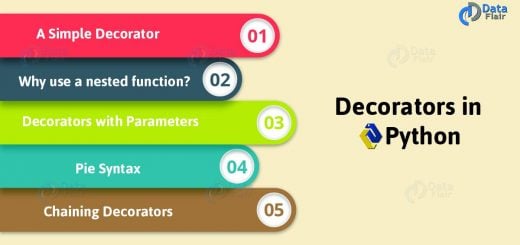
There have been two decorators in Python since rendition 2.2, in particular, class method() and staticmethod(). At that point, PEP 318 was assembled and the decorator punctuation was added to make designing capacities and strategies conceivable in Python 2.4. Class decorators were proposed in PEP 3129 to be incorporated into Python 2.6. They seem to work in Python 2.7, however, the PEP demonstrates that they weren't acknowledged until Python 3, so I don't know what occurred there.
We should begin off by discussing capacities, by and large, to get an establishment to work from.
The Humble Function
A capacity in Python and in numerous other programming dialects is only a gathering of reusable code. A few developers will adopt a nearly bash-like strategy and simply compose all their code out in a record without any capacities by any means. The code just keeps running through and through. This can prompt a great deal of reordering spaghetti code. At whatever point you see two bits of code that are doing likewise, they can quite often be put into a capacity. This will make refreshing your code simpler since you'll just have one place to refresh them. For more information Python online course
In Python, a considerable measure of creators will portray a capacity as a "top of the line question." When they say this, they imply that a capacity can be passed around and utilized as contentions to different capacities similarly as you would with an ordinary information compose, for example, a whole number or string. We should take a gander at a couple of cases so we can become accustomed to the thought:
As should be obvious, you can make a capacity and afterward pass it to Python's print() work or some other capacity. You will likewise take note of that once a capacity is characterized, it consequently has characteristics that we can get to. For instance, in the case above, we got to func_doc which was unfilled at first. This trait holds the substance of the capacity's docstring. Since we didn't have a docstring, it returned None. So we re-imagined the capacity to include a docstring and got to func_doc again to see the docstring. We can likewise get the capacity's name through the func_name traits. Don't hesitate to look at a portion of alternate traits that are appeared in the last case above.
Our First Decorator
Making a decorator is very simple. As specified before, all you have to do to make a decorator is to make a capacity that acknowledges another capacity as its contention
You will take note of that our decorator work, information(), has a capacity settled within it, called wrapper(). You can call the settled capacity whatever you like. The wrapper work acknowledges the contentions (and alternatively the catchphrase contentions) of the capacity you are wrapping with your decorator. In this illustration, we print out the wrapped capacity's name and docstring, in the event that it exists. At that point we restore the capacity, calling it with its contentions. Ultimately, we restore the wrapper work.For more updates and information python programming

No comments:
Post a Comment